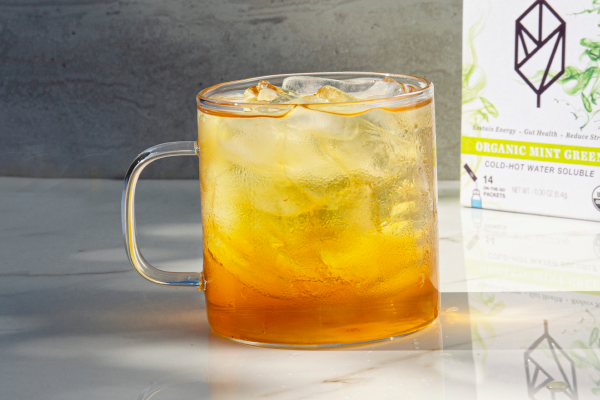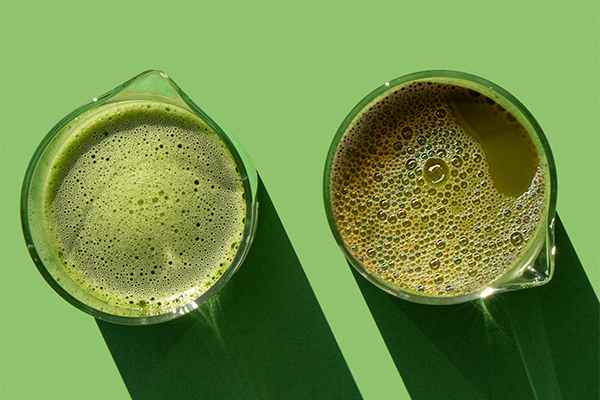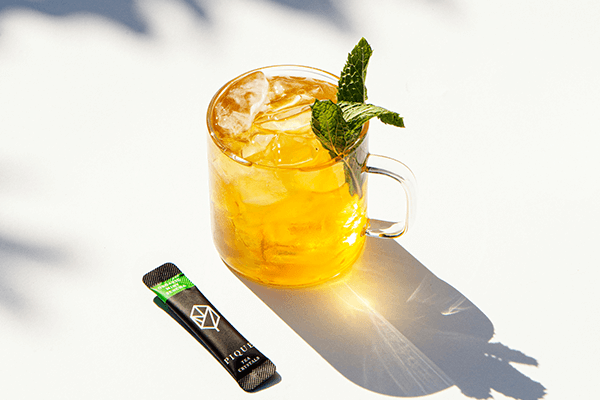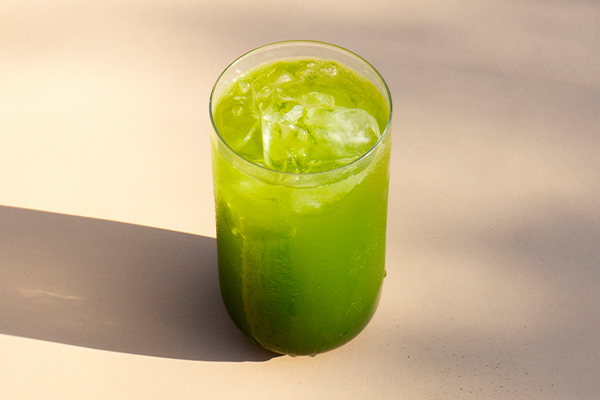If you’re a tea drinker who loves green tea, you may not be exactly sure how to make green tea at home.
Should you use boiling water or cooler water? Is a tea bag or loose-leaf green tea better? How long should you brew green tea for the best flavor?
If these questions have come up for you, or if your brewed tea just doesn’t taste right, today’s guide will shed more light on the process. We’ll show you how to make the perfect cup of green tea at home every time.
But before we dive into those tips and tricks, let’s talk about what makes green tea different and briefly touch on its health benefits first.
What Makes Green Tea Unique?
Green tea comes from the same tea plant (Camellia Sinensis) as black tea, oolong tea, and white tea. So how is green tea different from black tea?
It all comes down to the oxidation process, which dries, darkens, and builds flavor in the picked leaves. Black tea goes through oxidation long after it’s harvested. Green tea leaves, on the other hand, are dried immediately after they’re picked. This makes them virtually unoxidized.
However, it’s how tea cultivators stop the oxidation process that gives different types of tea their unique flavor profiles.
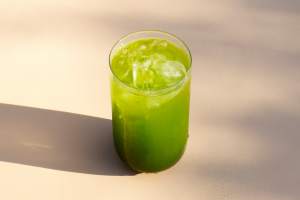
Flavors and Types of Green Tea
There are two major families of green tea: Japanese green tea and Chinese green tea. To stop oxidation, tea artisans in Japan steam the leaves, whereas Chinese tea growers pan-fry the harvested crop.
Each process imparts special, characteristic flavor profiles to the green tea leaves and affects the taste, aroma, color, and aftertaste of your brewed tea as a result. While the primary tasting notes of green tea may be fruity, floral, grassy, or vegetal, others pack smoky, earthy, or nutty aromas and tastes when brewed.
That’s why before you learn how to make green tea, you have to know how each one differs.
Japanese Green Tea
Japanese green tea types include:
- Sencha, the most popular type of Japanese tea. It boasts light, fresh, and grassy tasting notes.
- Bancha, or “common tea,” is the second-most popular and gives off a nutty, sweet flavor.
- Genmaicha, a lower grade of Sencha, typically has puffed rice or sorghum added to create a “toasty” flavor profile.
- Gyokuro tea boasts strong, savory notes some describe as similar to seaweed.
Now, two other Japanese green teas stand out from the rest of the pack:
Matcha tea, one of the most popular green teas, has a creamy flavor because the tea leaves are ground into a fine tea powder and consumed after steeping instead of discarded (kind of like making hot cocoa).
Hojicha tea leaves are roasted at a high temperature instead of steamed, which tints the leaves from green to reddish-brown and brings out a naturally sweet, smoky flavor.
Chinese Green Tea
Chinese green tea types include:
- Jasmine, a highly-scented tea with fresh floral notes from jasmine blossoms.
- Longjing (Dragon Well). This hand-roasted tea has a sweet, slightly nutty, well-rounded flavor profile.
- Biluochun, which gives off a strong aroma and vegetal, sometimes floral taste.
Despite each of these unique flavors and aromas, all green tea packs incredible health benefits.
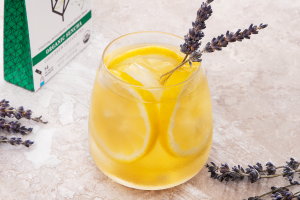
The Health Benefits of Green Tea
If you’ve ever wondered how green tea helps your body, research shows its powerful antioxidants, polyphenols, and catechins may help support:
- Brain health
- Healthy weight management
- Cardiovascular health
- Bone and joint health
- Eye health
- Satiety
- Skin health
In addition to those health benefits, green tea also contains a natural amino acid called L-theanine. While green teas contain varying levels of caffeine, L-theanine helps lessen the negatives (such as jitteriness), so you can enjoy a focused yet calming effect with each cup.
So now, let’s talk about your options for green tea brewing.
3 Options for How to Make Green Tea
You have a few different options to brew the best green tea at home:
1. Brew Individual Green Tea Bags
(Least recommended option)
Tea bags are the most common way people try to DIY green tea at home. With this option, you’ll add hot water to steep tea bags for a few minutes in a mug or tea kettle.
While easy to use, green tea bags are not the best choice for avid tea drinkers. First, most commercial tea bags constrict the tea leaves during steeping, so their flavors and aromas don’t have the chance to fully bloom. This may result in a bitter or lackluster cup of tea.
Second, green tea bags are not the most environmentally-friendly nor friendly to your health.
Researchers at McGill University learned that some single-use tea bags release 11.6 billion microplastic and 3.1 billion nanoplastic particles into the water. These are reportedly thousands of times higher than what’s found in other foods [1].
Unfortunately, scientists don’t fully understand what ingesting this many tiny plastic particles could mean for your health. And environmentally speaking, many store-bought tea bags are not biodegradable and may never decompose in a landfill, which is the last thing our beautiful planet needs.
So even though individual tea bags may be what you’re used to, you may want to re-think this route when brewing green tea at home and only choose trusted, quality tea brands that have our environment and your health in mind.
2. Loose-Leaf Green Tea
(Solid option)
You can eliminate harmful plastic particles and landfill waste by brewing loose leaf green tea in a reusable tea infuser or strainer. Simply fill your tea steeper with green tea leaves, let it sit in hot water for a few minutes, and then discard the leaves in your compost bin once brewed.
However, you must be careful to choose organic options here. Commercial loose-leaf green tea is often sprayed with harmful chemicals and grown with pesticides, which may find their way into your warm cup of tea and your system.
3. Dissolvable Tea Crystals
(Most highly-recommended option)
Dissolvable green tea crystals give you the convenience of brewing a tea bag without worrying about harmful plastics or chemicals. These tea crystals are made using the finest green tea leaves, are grown without pesticides, and get carefully screened for toxins.
Most tea drinkers agree that brewing tea crystals is even easier than steeping traditional tea bags. All you have to do is get your water ready, open a packet of crystals, pour them into your mug, stir, and enjoy!
Since they dissolve directly in water, green tea crystals are ideal for taking on-the-go to a restaurant, office, gym, or a friend’s house. You’ll never worry about where to toss your wet tea bag (or adding it to a landfill) again.
But here’s the best part: you can brew green tea crystals in both hot and cold water (unlike loose leaf tea or tea bags). So if you don’t have hot water available or you’re craving a refreshing iced tea, one will always be within reach.
No matter which option you choose, there are a few tips to keep in mind when brewing your green tea, especially if you’re chasing that out-of-this-world-delicious taste.
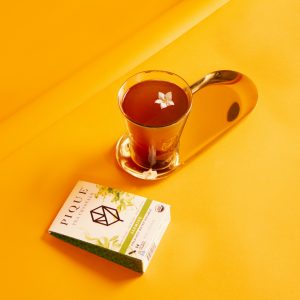
Pique Jasmine Green Tea
Catechins in full bloom. Clean energy + gut support. Exotic fragrance to transport the senses.
How Can I Make Green Tea at Home?
Making your own green tea at home takes a bit of practice because the variety you choose, how you brew your green tea, and the water temperature all make a huge difference. Follow these three simple steps for a perfect cup of green tea every time:
First, Start with a High-Quality Green Tea and Water
You’ll never get the best cup of green tea from a low-quality tea. You also can’t expect a grassy flavor from a green tea that leans on the floral or nutty side. That’s why before you even begin steeping, you need to choose a high-quality tea and a tea type that matches your individual flavor preferences.
The same goes for the type of water you use. Tap water may add more minerals to your brewed tea and alter the final taste. The pH level can also throw off your cup of tea, causing it to taste less than ideal. And while hard water can leave your tea bland and flat, soft water may result in a saltier taste.
To ensure you have the best water for your home-brewed green tea, opt for carbon-filtered or reverse osmosis water, and your teas will taste much better.
Next, Watch the Temperature of Your Water
You never want to use boiling water with green tea. This temperature is far too hot and may scorch the light tea leaves, causing a bitter, astringent taste.
The boiling point of water is 212 degrees Fahrenheit (about 100 degrees Celsius), but you’ll want to steep green tea between 145 and 180°F (approximately 62-82°C), depending on the type of green tea you choose.
To reach this ideal green tea temperature, boil water in a tea pot first and then wait at least three minutes before adding it to your green tea leaves or tea crystals. You can also use a food-grade thermometer if you want to be precise here.
Couldn’t you just brew your water at a lower temperature? Not exactly. To get the full flavor of your green tea, you must reach higher temperatures to awaken the green tea leaves but not scorch their delicate nature.
Finally, Steeping Time Matters
You may have assumed that when green tea steeps for longer periods of time, you’ll get to extract more flavor. Unfortunately, this is not the case. If you steep green tea for too long, you’ll end up with a bitter, tannin-rich tea that’s anything but delicious.
While the length of steep time varies for each type of green tea, you’ll want to steep green tea for anywhere between 1.5 to three minutes, tops. You can also experiment to find your favorite duration.
How Do You Make Green Tea Taste Good?
If you follow those simple steps, you’ll get the perfect cup of green tea every time. But if you want to take your green tea recipe up a notch, you can:
-
- Sweeten to taste with natural sweeteners like honey, stevia, or monk fruit.
- Add a squeeze of lemon juice, which works especially well with iced green tea.
- Add a splash of milk (such as almond, coconut, or oat milk) to create a green tea latte.
- Mix in herbal teas for an additional flavor boost. You can separately steep one green tea and one herbal tea (such as ginger, hibiscus, or peppermint) to create a personalized tea blend that’s all your own.
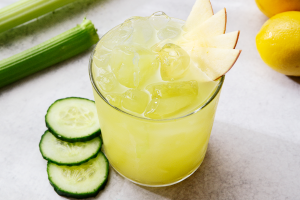
Final Thoughts on Making Green Tea at Home
After reading this guide, you now know all the ins and outs of how to make green tea at home, including how to brew green tea when you’re on-the-go or don’t have hot water.
Opting for tea crystals gives you the fastest, easiest, and cleanest method to soak up all the health benefits and energizing qualities found in green tea. And you can enjoy a cup wherever you happen to be.
For more information about green tea, including the incredible skin benefits it touts, check out the other guides we’ve created next!
